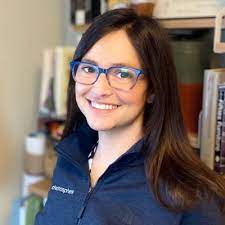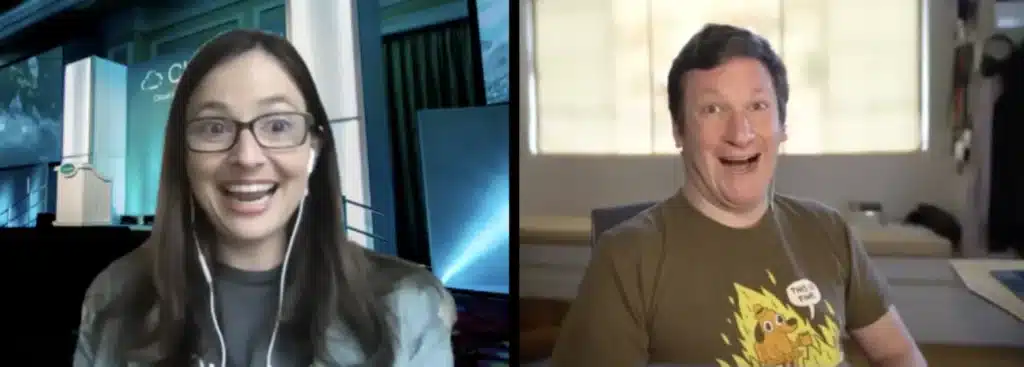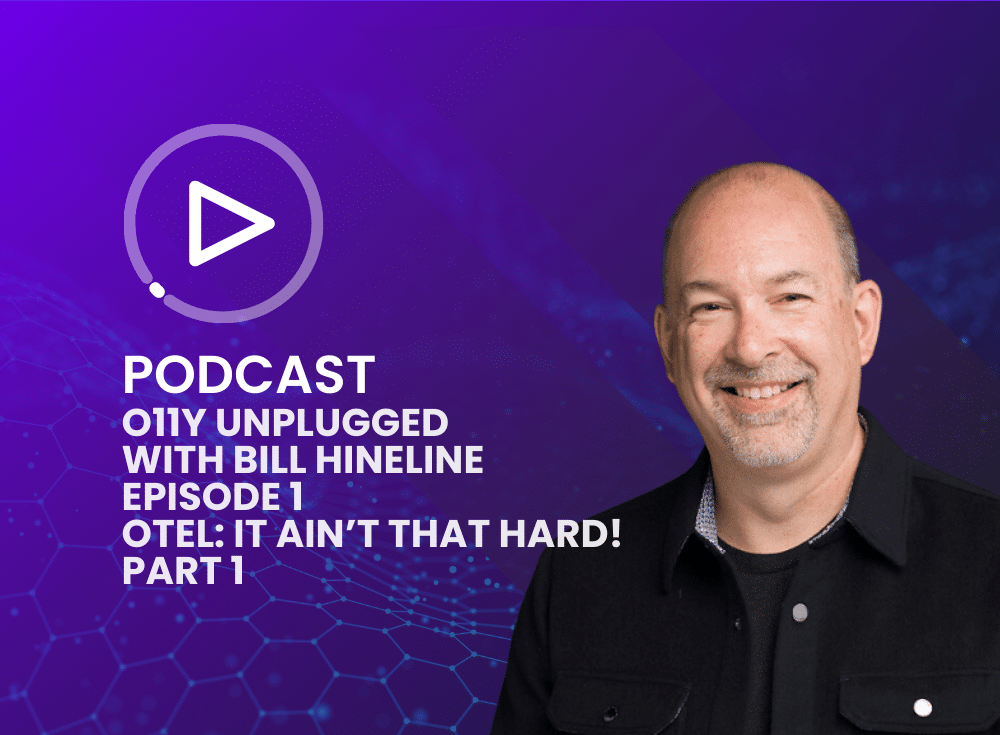Corey Quinn podcast: from cloud bills to cloud-native
Featuring

Director of Product and Solutions Marketing
Rachel leads product and technical marketing for Chronosphere. Previously, she built out product, technical, and channel marketing at CloudHealth (acquired by VMware). Prior to that she led product marketing for AWS and cloud-integrated storage at NetApp and also spent time as an analyst at Forrester Research covering resiliency, backup, and cloud. Outside of work, she tries to keep up with her young son and hyper-active dog, and when she has time, enjoys crafting and eating out at local restaurants in Boston.

Chief Cloud Economist
The Duckbill Group
Corey is the Chief Cloud Economist at The Duckbill Group. Corey’s unique brand of snark combines with a deep understanding of AWS’s offerings, unlocking a level of insight that’s both penetrating and hilarious. He lives in San Francisco with his spouse and daughters.
When I first met public cloud influencer, Last week in AWS newsletter publisher, Screaming in the Cloud podcast host, and Chief Cloud Economist at The Duckbill Group, Corey Quinn, he always wore a suit. Always. If you’re digging into the origin story of this cloud hero/villian (depending on your perspective), this is an important detail to note because it underscores how eccentric Corey really is.
Over the five or so years I’ve known him, I’ve had the opportunity to present with Corey at conferences, record podcasts, and take a few selfies. Most recently, I sat down with Corey on his Screaming in the cloud podcast to talk about my career in tech and what’s brought me to where I am today at Chronosphere.

Listen to the full podcast to hear our conversation that ranged from discussing my experience at Forrester and seeing the early rise of AWS to more recently why I joined Chronosphere. In the meantime, here are some highlights:
On being a Forrester Research analyst
CQ: What is it that Forrester [Research] does? What is its place in the ecosystem?
RAD: Forrester is one of the largest industry analyst firms. Analysts there are paid to be big thinkers and strategists… Over the course of a year, I would talk to hundreds of different large enterprises, the infrastructure and ops leaders at everyone from American Express to Johnson & Johnson to Monsanto, learn from them, write research and reports, and also do things like inquiries and speaking engagements.
The idea of industry analysts is that they’re neutral, they’re objective. You can go to them for advice, and they can help you build a shortlist of vendors you should consider and what you should look for in a solution.
Towards the end of my time there was when we were starting to get briefings from this bookstore company—you might have heard of them— Amazon?
CQ: Barnes and Noble.
RAD: Yes. And Barnes and Noble. Yes. We were starting to get briefings from Amazon Web Services, and S3 had just been introduced. I got really excited about Netflix and chaos engineering—this was 2012—and so I did a bunch of research on chaos engineering and tried to figure out how it could apply to the enterprises.
On joining CloudHealth
CQ: How did you wind up finding yourself at CloudHealth?
RAD: I’d never really done the startup thing, even though I’ve always been an entrepreneur at heart. I started my first business on the playground in second grade, and it was reselling sticks of gum! I was shut down pretty quickly…
I set out looking for a Series B company, about 50 people, I wanted something in the public cloud space. I met the folks from CloudHealth and was really attracted to the vision of the founders. I thought, “Hey, they’ve built startups before. They’ve got a great idea.” It was a really amazing journey, and I got to build a pretty big team over time. By the time we were acquired a couple of years later, I think we were maybe 300 people.
During my time there, I got to work with some really cool large cloud-scale organizations. It was during that time that I started to learn more about Kubernetes and Mesos at the time, and started on the journey that led me to where I am now.
Journey to Chronosphere
CQ: Now you’re the Head of Product and Technical Marketing at Chronosphere, which is in the observability space. How did you get there from cloud bills?
RAD: When I was at CloudHealth, one of the big pain points I was seeing from a lot of our customers was the growth in their monitoring bills. They would tell me, “Okay, thanks. You helped us with our EC2 reservations, and we did right-sizing, and you helped with our Datadog bill? Can you help with our New Relic bill?”
That was becoming the next biggest line item for them. In some cases, they were spending more on monitoring and APM than they were spending on their production cloud, which is just bananas. The result was they would make really bizarre and unfortunate choices, like, “I guess we’re not going to monitor the lab anymore. We’re just going to uninstall the agents because we can’t pay this anymore.”
When I was getting to the point where I was ready to leave CloudHealth, I took into account the two key trends I was seeing in the market. One is people need a change in their monitoring and observability; what they’re doing now isn’t working. And two, cloud-native is coming up, coming fast, and it’s going to really disrupt this market. I went looking for a company that was at the intersection of the two. That’s when I met the team at Chronosphere, and just immediately hit it off with the founders. The whole team is fantastic, just incredibly smart and dedicated people. And then the technology makes so much sense – it’s built for this speed, containers coming and going all the time, for the scale, just how much more metrics and observability data that containers emit, the interdependencies between all of your microservices and your containers.
Tune to hear our entire conversation.
Want more Corey? Check out Chronosphere CEO, Martin Mao, on Screaming in the cloud last summer.
Share This:


